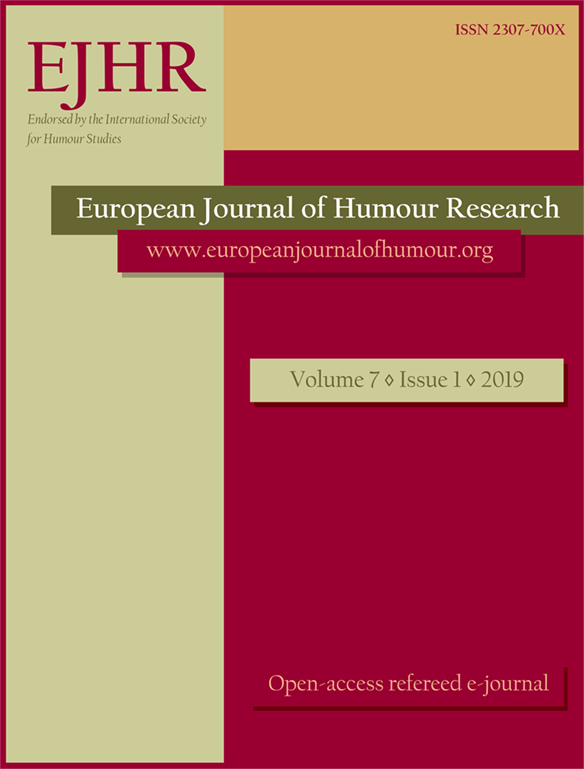Abstract
In 1964, many decades before multilingual movies have become fashionable, a Polish director, Stanisław Lenartowicz, made a war comedy called “Giuseppe in Warsaw”. It narrates the adventures of an Italian soldier who on his way home from the Russian front during World War II is stranded in Poland. Pseudo-language, translation, mistranslation, and mock translation figure conspicuously in the movie, which shows a series of clashes between Polish, German and Italian languages in the most improbable combinations. The original film used no subtitles, because the linguistic chaos was pivotal to showing the absurdity of the war through the deforming lenses of the comedy. This paper analyses various mechanisms of the multilingual humour in the original film and in its subtitled version in Italian, in order to see how the dynamics of humour change in the case of L3TT which becomes L2 in translation (Italian), especially when the point of the view of the audience is subverted and the viewers identify with the protagonist rather than the Polish characters in the movie.
References
Bleichenbacher L. (2007). ‘This is meaningless-it's in Russian : multilingual characters in mainstream movie’, in: Engler, B., Michalcak L. (eds.), Cultures in contact. (SPELL 17.) Tübingen: Gunter Narr. 111–127.
Bleichenbacher L. (2008). Multilingualism in the Movies. Hollywood Characters and Their Language Choices. Tübingen: Francke Verlag.
Chiaro D. (2010) ‘Translation and Humour, Humour and Translation’, in Chiaro D. (ed.) Translation, Humour and Literature. Translation and Humour V. 1 London – New York, Continuum, 1-29.
Corrius, M., Zabalbeascoa P. (2011). ‘Language variation in source texts and their translations. The case of L3 in film translation’. Target, 23 (1), 113-130.
de Higes Andino I. (2014). ‘The translation of multilingual films: Modes, strategies, constraints and manipulation in the Spanish translations of It’s a Free World…’. Linguistica Antverpiensia,, New Series – Themes in Translation Studies, 13, 211-231.
Delabastita D. (2009) ‘Fictional representations.’ In Baker M., Saldanha G. (eds.), Routledge encyclopedia of translation studies (2nd ed) London: Routledge,109–112.
Diaz-Cintas J. 2011, ‘Dealing with Multilingual Films in Audiovisual Translation’, in: Pöckl, W., Ohnheiser, I., Sandrini, P. (eds.) Translation - Sprachvariation - Mehrsprachigkeit. Festschrift für Lew Zybatow zum 60. Geburtstag. Frankfurt am Main: Peter Lang, 214-233.
Dondzik M. (2014). ‘Okupacja, konspiracja i “sycylijski bandyta”. Giuseppe w Warszawie Stanisława Lenartowicza’, in: Miller-Klejsa A., Woźniak M. (eds.) Polsko-włoskie kontakty filmowe. Topika, koprodukcje, recepcja. Łódź: Szkoła Filmowa w Łodzi – Wydawnictwo Uniwersytetu Łódzkiego, 39-56.
Dwyer T. (2005). ‘Universally speaking: Lost in Translation and polyglot cinema’, in Delabastita D., Grutman R. (eds.), Fictionalising Translation and Multilingualism, Linguistica Antverpiensa, 4, 11-34. https://www.era.lib.ed.ac.uk/handle/1842/3403
Heiss C. (2004) ‘Dubbing Multilingual Flms: A New Challenge?’ Meta: Translator’s Journal, 49(1): 208-220.
Heiss, C. (2014) ‘Multilingual Films and Integration? What Role Does Film Translation Play?’, in Dror Abend-David (ed), Media and translation. An interdisciplinary approach, New York/London/New Delhi/Sydney: Bloomsbury, 3-24.
Meylaerts, R. (2006). ‘Heterolingualism in/and translation: How legitimate are the other and his/her language? An introduction.’ Target 18 (1), 1–15.
O’Sullivan C. (2011). Translating Popular Films. Basinstock: Palgrave Macmillan.
Ritchie G.D. (2000). ‘Describing Verbally Expressed Humour’. https://www.academia.edu/403898/Describing_Verbally_Expressed_Humour
Shochat, E. Stam R. (1985). ‘The Cinema After Babel: Language, Difference, Power’, Screen 26 (3-4): 35-58.
Sternberg M. (1981). ‘Polylingualism as reality and translation as mimesis’. Poetics Today, 2 (4), 221–239.
Voellmer E., Zabalbeascoa P. (2014). ‘How heterolingual can a dubbed film be? Language combinations and national traditions as determining factors’. Linguistica Antverpiensia, New Series – Themes in Translation Studies, 13: 232-250.
Wahl, C. (2008). ‘Du Deutscher, Toi Français, You English: Beautiful! – The Polyglot Film as a Genre’, in: Miyase C., Nezih E. (eds.) Shifting Landscapes. Film and Media in European Context. Newcastle: Cambridge Scholars Publishing, 334-350.
Zabalbeascoa P., Voellmer E. (2014). ‘Accounting for Multilingual Films’, in: Dror A.-D. (ed.), Media and translation. An interdisciplinary approach. New York/London/New Delhi/Sydney: Bloomsbury, 25–52.
Zabalbeascoa P. (2018). ‘Solution-Types for Representing Dubbed Film and TV Multilingual Humour, in: Ranzato I., Zanotti S., Linguistic and Cultural Representation in Audiovisual Translation. New York – London: Routledge, 165-183.

